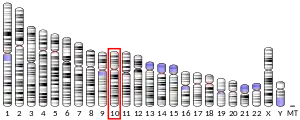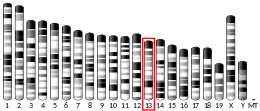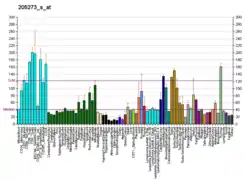| PITRM1 | |||||||||||||||||||||||||||||||||||||||||||||||||||
|---|---|---|---|---|---|---|---|---|---|---|---|---|---|---|---|---|---|---|---|---|---|---|---|---|---|---|---|---|---|---|---|---|---|---|---|---|---|---|---|---|---|---|---|---|---|---|---|---|---|---|---|
| |||||||||||||||||||||||||||||||||||||||||||||||||||
| Identifiers | |||||||||||||||||||||||||||||||||||||||||||||||||||
| Aliases | PITRM1, MP1, PreP, pitrilysin metallopeptidase 1, SCAR30 | ||||||||||||||||||||||||||||||||||||||||||||||||||
| External IDs | OMIM: 618211 MGI: 1916867 HomoloGene: 5742 GeneCards: PITRM1 | ||||||||||||||||||||||||||||||||||||||||||||||||||
| |||||||||||||||||||||||||||||||||||||||||||||||||||
| |||||||||||||||||||||||||||||||||||||||||||||||||||
| |||||||||||||||||||||||||||||||||||||||||||||||||||
| |||||||||||||||||||||||||||||||||||||||||||||||||||
| |||||||||||||||||||||||||||||||||||||||||||||||||||
| Wikidata | |||||||||||||||||||||||||||||||||||||||||||||||||||
| |||||||||||||||||||||||||||||||||||||||||||||||||||
Pitrilysin metallopeptidase 1 also known as presequence protease, mitochondrial (PreP) and metalloprotease 1 (MTP-1) is an enzyme that in humans is encoded by the PITRM1 gene.[5][6][7] It is also sometimes called metalloprotease 1 (MP1).PreP facilitates proteostasis by utilizing an ~13300-A(3) catalytic chamber to degrade toxic peptides, including mitochondrial presequences and β-amyloid.[8] Deficiency of PreP is found associated with Alzheimer’s disease. Reduced levels of PreP via RNAi mediated knockdown have been shown to lead to defective maturation of the protein Frataxin.[9]
Structure
Gene
The PITRM1 gene is located at chromosome 10q15.2, consisting of 28 exons.
Protein
PreP is a 117 kDa M16C enzyme that is widely expressed in human tissues.[10] PreP is composed of PreP-N (aa 33-509) and PreP-C (aa 576-1037) domains, which are connected by an extended helical hairpin (aa 510-575). Its structure demonstrates that substrate selection by size-exclusion is a conserved mechanism in M16C proteases.[8]
Function
PreP is an Zn2+-dependent and ATP-independent metalloprotease, it doesn’t select substrates on the basis of post-translational modifications or embedded degradation tags.[11][12][13] Instead, it uses a negatively charged catalytic chamber to engulf substrates peptides of up to ~65 residues while excluding larger, folded proteins.[14][15] It primarily localizes to the mitochondrial matrix, and cuts a range of peptides into recyclable fragments.[16][17] The substrates of PreP are vital to proteostasis, as they can insert to mitochondrial membranes, disrupting electrical potential and uncoupling respiration.[18][19] Thus deletion of PRTRM1 leads to a delayed growth phenotype.[20][21] Notabley, PreP degrades several functionally relevant Aβ species, the aggregates of which are toxic to the neuron and play a key role in AD pathogenesis.[22][14][23]
Clinical significance
PreP is the Aβ-degrading protease in mitochondria. Immune-depletion of PreP in brain mitochondria prevents degradation of mitochondrial Aβ, and PreP activity is found diminished in AD patients.[8] It has been reported that the loss of PreP activity is due to methionine oxidation and this study provides a rational basis for therapeutic intervention in conditions characterized by excessive oxidation of PreP.[24] A recent study also suggests that PreP regulates islet amyloid polypeptide in beta cells.[25] Two siblings carrying a homozygous PITRM1 missense mutation (c.548G>A, p.Arg183Gln) were reported to be associated with an autosomal recessive, slowly progressive syndrome. Clinical features include mental retardation, spinocerebellar ataxia, cognitive decline and psychosis.[26] A mouse model hemizygous for PITRM1 displayed progressive ataxia which was suggested to be linked to brain degenerative lesions, including accumulation of Aβ‐positive amyloid deposits. Recently, two brothers from a consanguineous family presenting with childhood-onset recessive cerebellar pathology were shown to carry a homozygous mutation in PITRM1 (c.2795C>T, p.T931M). This mutation resulted in 95% reduction in PITRM1 protein.[27] PITRM1 knockdown was shown to lead to reduced levels of mature Frataxin protein,[28] a protein that when deficient causes Friedreich's ataxia, and may be implicated in pathology in patients carrying PITRM1 mutations.
Interactions
PITRM1 has been shown to interact with the following proteins: CCL22, CGB2, DDX41, DEFB104A, HDHD3, MRPL12, NDUFV2, PRDX6, PRKCSH, RARS2, RIF1, SUCLG2, TEKT3, TERF2, and VAPB.[29]
References
- 1 2 3 GRCh38: Ensembl release 89: ENSG00000107959 - Ensembl, May 2017
- 1 2 3 GRCm38: Ensembl release 89: ENSMUSG00000021193 - Ensembl, May 2017
- ↑ "Human PubMed Reference:". National Center for Biotechnology Information, U.S. National Library of Medicine.
- ↑ "Mouse PubMed Reference:". National Center for Biotechnology Information, U.S. National Library of Medicine.
- ↑ Marusov EV (July 1977). "[Ecological sterotypes of defensive behavior in fish under the action of chemical danger signals]". Nauchnye Doklady Vysshei Shkoly. Biologicheskie Nauki (8): 67–9. PMID 1036083.
- ↑ Kikuno R, Nagase T, Ishikawa K, Hirosawa M, Miyajima N, Tanaka A, Kotani H, Nomura N, Ohara O (June 1999). "Prediction of the coding sequences of unidentified human genes. XIV. The complete sequences of 100 new cDNA clones from brain which code for large proteins in vitro". DNA Research. 6 (3): 197–205. doi:10.1093/dnares/6.3.197. PMID 10470851.
- ↑ "Entrez Gene: PITRM1 pitrilysin metallopeptidase 1".
- 1 2 3 King JV, Liang WG, Scherpelz KP, Schilling AB, Meredith SC, Tang WJ (July 2014). "Molecular basis of substrate recognition and degradation by human presequence protease". Structure. 22 (7): 996–1007. doi:10.1016/j.str.2014.05.003. PMC 4128088. PMID 24931469.
- ↑ Nabhan JF, Gooch RL, Piatnitski Chekler EL, Pierce B, Bulawa CE (December 2015). "Perturbation of cellular proteostasis networks identifies pathways that modulate precursor and intermediate but not mature levels of frataxin". Scientific Reports. 5 (1): 18251. doi:10.1038/srep18251. PMC 4680912. PMID 26671574.
- ↑ Mzhavia N, Berman YL, Qian Y, Yan L, Devi LA (May 1999). "Cloning, expression, and characterization of human metalloprotease 1: a novel member of the pitrilysin family of metalloendoproteases". DNA and Cell Biology. 18 (5): 369–80. doi:10.1089/104454999315268. PMID 10360838.
- ↑ Malito E, Hulse RE, Tang WJ (August 2008). "Amyloid beta-degrading cryptidases: insulin degrading enzyme, presequence peptidase, and neprilysin". Cellular and Molecular Life Sciences. 65 (16): 2574–85. doi:10.1007/s00018-008-8112-4. PMC 2756532. PMID 18470479.
- ↑ Ravid T, Hochstrasser M (September 2008). "Diversity of degradation signals in the ubiquitin-proteasome system". Nature Reviews. Molecular Cell Biology. 9 (9): 679–90. doi:10.1038/nrm2468. PMC 2606094. PMID 18698327.
- ↑ Sauer RT, Baker TA (2011). "AAA+ proteases: ATP-fueled machines of protein destruction". Annual Review of Biochemistry. 80: 587–612. doi:10.1146/annurev-biochem-060408-172623. PMID 21469952.
- 1 2 Falkevall A, Alikhani N, Bhushan S, Pavlov PF, Busch K, Johnson KA, Eneqvist T, Tjernberg L, Ankarcrona M, Glaser E (September 2006). "Degradation of the amyloid beta-protein by the novel mitochondrial peptidasome, PreP". The Journal of Biological Chemistry. 281 (39): 29096–104. doi:10.1074/jbc.M602532200. PMID 16849325.
- ↑ Johnson KA, Bhushan S, Ståhl A, Hallberg BM, Frohn A, Glaser E, Eneqvist T (May 2006). "The closed structure of presequence protease PreP forms a unique 10,000 Angstroms3 chamber for proteolysis". The EMBO Journal. 25 (9): 1977–86. doi:10.1038/sj.emboj.7601080. PMC 1456932. PMID 16601675.
- ↑ Alikhani N, Berglund AK, Engmann T, Spånning E, Vögtle FN, Pavlov P, Meisinger C, Langer T, Glaser E (July 2011). "Targeting capacity and conservation of PreP homologues localization in mitochondria of different species". Journal of Molecular Biology. 410 (3): 400–10. doi:10.1016/j.jmb.2011.05.009. PMID 21621546.
- ↑ Chow KM, Gakh O, Payne IC, Juliano MA, Juliano L, Isaya G, Hersh LB (April 2009). "Mammalian pitrilysin: substrate specificity and mitochondrial targeting". Biochemistry. 48 (13): 2868–77. doi:10.1021/bi8016125. PMC 2765508. PMID 19196155.
- ↑ Koppen M, Langer T (2007). "Protein degradation within mitochondria: versatile activities of AAA proteases and other peptidases". Critical Reviews in Biochemistry and Molecular Biology. 42 (3): 221–42. doi:10.1080/10409230701380452. PMID 17562452. S2CID 6819247.
- ↑ Mossmann D, Meisinger C, Vögtle FN (2012). "Processing of mitochondrial presequences". Biochimica et Biophysica Acta (BBA) - Gene Regulatory Mechanisms. 1819 (9–10): 1098–106. doi:10.1016/j.bbagrm.2011.11.007. PMID 22172993.
- ↑ Kambacheld M, Augustin S, Tatsuta T, Müller S, Langer T (May 2005). "Role of the novel metallopeptidase Mop112 and saccharolysin for the complete degradation of proteins residing in different subcompartments of mitochondria". The Journal of Biological Chemistry. 280 (20): 20132–9. doi:10.1074/jbc.M500398200. PMID 15772085.
- ↑ Nilsson Cederholm S, Bäckman HG, Pesaresi P, Leister D, Glaser E (November 2009). "Deletion of an organellar peptidasome PreP affects early development in Arabidopsis thaliana". Plant Molecular Biology. 71 (4–5): 497–508. doi:10.1007/s11103-009-9534-6. PMID 19701724. S2CID 28627753.
- ↑ Alikhani N, Guo L, Yan S, Du H, Pinho CM, Chen JX, Glaser E, Yan SS (2011). "Decreased proteolytic activity of the mitochondrial amyloid-β degrading enzyme, PreP peptidasome, in Alzheimer's disease brain mitochondria". Journal of Alzheimer's Disease. 27 (1): 75–87. doi:10.3233/JAD-2011-101716. hdl:1808/17858. PMC 3381900. PMID 21750375.
- ↑ Pinho CM, Björk BF, Alikhani N, Bäckman HG, Eneqvist T, Fratiglioni L, Glaser E, Graff C (January 2010). "Genetic and biochemical studies of SNPs of the mitochondrial A beta-degrading protease, hPreP". Neuroscience Letters. 469 (2): 204–8. doi:10.1016/j.neulet.2009.11.075. PMID 19962426. S2CID 31073898.
- ↑ Chen J, Teixeira PF, Glaser E, Levine RL (December 2014). "Mechanism of oxidative inactivation of human presequence protease by hydrogen peroxide". Free Radical Biology & Medicine. 77: 57–63. doi:10.1016/j.freeradbiomed.2014.08.016. PMC 4258540. PMID 25236746.
- ↑ Guan H, Chow KM, Song E, Verma N, Despa F, Hersh LB (2015). "The Mitochondrial Peptidase Pitrilysin Degrades Islet Amyloid Polypeptide in Beta-Cells". PLOS ONE. 10 (7): e0133263. doi:10.1371/journal.pone.0133263. PMC 4507941. PMID 26191799.
- ↑ Brunetti D, Torsvik J, Dallabona C, Teixeira P, Sztromwasser P, Fernandez-Vizarra E, et al. (March 2016). "Defective PITRM1 mitochondrial peptidase is associated with Aβ amyloidotic neurodegeneration". EMBO Molecular Medicine. 8 (3): 176–90. doi:10.15252/emmm.201505894. PMC 4772954. PMID 26697887.
- ↑ Langer Y, Aran A, Gulsuner S, Abu Libdeh B, Renbaum P, Brunetti D, et al. (May 2018). "PITRM1 peptidase loss-of-function in childhood cerebellar atrophy". Journal of Medical Genetics. 55 (9): jmedgenet–2018–105330. doi:10.1136/jmedgenet-2018-105330. hdl:2434/622800. PMID 29764912. S2CID 21727945.
- ↑ Nabhan JF, Gooch RL, Piatnitski Chekler EL, Pierce B, Bulawa CE (December 2015). "Perturbation of cellular proteostasis networks identifies pathways that modulate precursor and intermediate but not mature levels of frataxin". Scientific Reports. 5: 18251. doi:10.1038/srep18251. PMC 4680912. PMID 26671574.
- ↑ "PITRM1 interaction network". BioGRID. Retrieved 6 August 2016.
Further reading
- Schaeffer HJ, Catling AD, Eblen ST, Collier LS, Krauss A, Weber MJ (September 1998). "MP1: a MEK binding partner that enhances enzymatic activation of the MAP kinase cascade". Science. 281 (5383): 1668–71. doi:10.1126/science.281.5383.1668. PMID 9733512.
- Suzuki Y, Yoshitomo-Nakagawa K, Maruyama K, Suyama A, Sugano S (October 1997). "Construction and characterization of a full length-enriched and a 5'-end-enriched cDNA library". Gene. 200 (1–2): 149–56. doi:10.1016/S0378-1119(97)00411-3. PMID 9373149.
- Maruyama K, Sugano S (January 1994). "Oligo-capping: a simple method to replace the cap structure of eukaryotic mRNAs with oligoribonucleotides". Gene. 138 (1–2): 171–4. doi:10.1016/0378-1119(94)90802-8. PMID 8125298.




